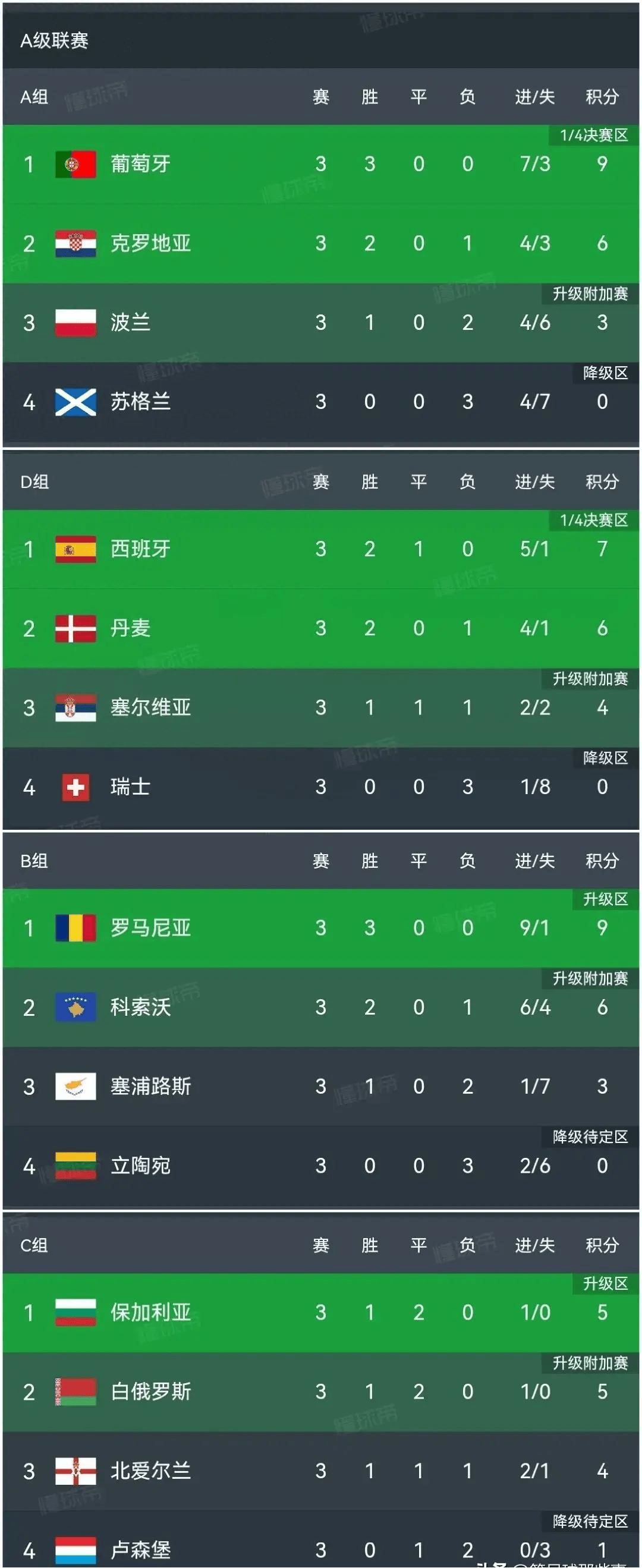1. The rule for the European Union to advance to the World Cup is that the European Union's record does not directly affect the qualification for the World Cup.European Union Promotion RulesHowever, the results of the European Union can provide teams with the opportunity to participate in the European play-offs of the World Cup qualifiers. In detail, the results of the European Union, that is, the European National League, do not directly determine the number of participants in the World Cup. The number of participants in the World Cup is mainly determined through World Cup qualifiers. However, if the team performs well in the European Union, such as winning the European Union.European Union Promotion Rules; The drawing rules for the quarter-finals of the European Union are relatively simple and clear. They mainly consist of the following steps. First, the eight teams that have advanced to the 14th finals will be included in the drawing. These teams usually stand out after fierce competition in the group stage and have high strength and competitive level. Before the draw, the first place in each group will be set as the seed team, which is an important prerequisite, because it will affect the result of the draw to a certain extent; The main change in the rules of the European League system in 2024 lies in the expansion of the finals. First, the European League system in the 202425 season has undergone significant changes compared with the past. The most eye-catching change is the competition system in the Group A finals. In the past, after the European League group stage, the top names of the four groups in Group A will compete directly in the semi-finals. However, during this season, the rules have been adjusted, and the top two teams in the four groups will have the opportunity to advance and be grouped; The UEFA promotion rules are mainly determined by the results in the group stage. They also involve the promotion and relegation system and the allocation of European Cup play-off spots. First, in the group stage, the UEFA participating teams are divided into four levels, and each level is divided into several groups to compete. The top two of each group will be promoted to the next stage of the competition, depending on their points ranking in the group stage. For example, in the UEFA season, Cascade A.
2. In League A, the top two teams in each group will advance to the quarter-finals, which is a key step on the road to the European League championship. For leagues BC and D, the qualifying rules are slightly different. In these leagues, only the team that ranks first in the group can advance to a higher level, which means that they need to stand out in the group stage. Occupying the top spot and points play a crucial role in determining the group ranking.
3. Overview of the European Union Rules The European Union, the full name of the European League UEFA Nations League, is an international football event established by the European Football Confederation UEFA in 2018. It aims to increase competition opportunities between European countries and improve the level of national team football., and bring more exciting games to fans. Detailed explanation of the European Union Rules 1 Group and Level The European Union divides participating countries into four levels according to their strength, namely ABC; The UEFA group stage qualifying rules are mainly determined based on the team's performance and points in the group stage. The rules are designed to ensure that each team can obtain corresponding promotion or downgrade results based on its actual strength and performance. First, the UEFA participating teams are divided into four levels: Level A, Level B, Level C and Level D. Each level is further divided into several groups. The results of the team's round-robin match within the group are calculated based on factors such as the win-loss relationship and the goal difference; Furthermore, after the group stage, the rule that the top two players in each group will advance to the next stage of the competition makes the competition in the group stage more intense, because each team hopes to be able to rank among the top two, so as to gain the opportunity to advance. The advancing teams will have the opportunity to participate in higher-level competitions, compete with stronger opponents, and improve their competitive level. Finally, it is worth mentioning that the European Union group stage also sets some special rules; After the group stage of the participating teams in the play-off stage, based on the rankings of the third and fourth places in each group and the results of the European Union, 16 teams will be selected to participate in the play-off grouping. The play-off is divided into four paths. Each path consists of four teams to ensure that teams from the same group do not meet each other. The competition system adopts a single-game elimination system. The winner advances to the main stage of the European Championship. This promotion rule aims to ensure that Europe is strong.
4. Classified competition system European countries are divided into four different levels of leagues: ABC and D. Each level of league has different participating teams and competition rules. For example, the A-level league is composed of the strongest national team in Europe and is divided into four groups. Each group plays a home and away round-robin game. Finally, the promotion and relegation teams are determined based on the point ranking. This hierarchical competition system increases the fairness of the game and also provides weaker national teams with more opportunities to show their strength.
5,4 The knockout stage is limited to teams in the A-level league. The top two teams in the group advance to the quarter-finals. The four teams that won the two-round knockout stage enter the semi-finals and finally compete for the championship. 5 Special ranking rules shall be applied to group matches. If the two teams have the same points, ranking 6 will be determined based on the results of the mutual competition and other criteria. The European Union's competition rules aim to maintain competitiveness and enjoyment while introducing a new competitive model, which promotes the development of European football; The rules of the European Union competition system are detailed as follows: The European Union, the full name of the European League, is a national team level event hosted by the Union of European Football Associations. The event transforms the traditional friendly match into a league model with a promotion system, enhancing the competition. Competitive and ornamental nature In terms of competition system, the European Union divides participating teams into four levels ABC and D based on their strength. Among them, the ABC level each contains 16 teams and is divided into four groups; For example, in level A, the first player in each group advances to the finals and has a chance to compete for the championship, while the fourth player in each group will be demoted to level B. Similarly, in level BC, the first player in the group will be promoted to the previous level, while the team at the bottom will be demoted. This promotion and downgrade system makes the game more suspenseful and challenging. In addition, the European Union's ranking rules are also quite detailed. If the points are the same, the ranking rules will be assigned in order; The European National League will divide 55 teams into 4 levels according to their rankings according to the following format. Level A, Level B, Level C, Level D. The classification standard for the first time is based on the points rankings of UEFA's associations to determine the promotion rules of the European Union. The winning teams of the four teams in Level A will participate in the semi-finals of the semi-finals and the finals of the semi-finals in June of the following year and decide the championship. The teams at the bottom of the four teams will be relegated to the B-level league and the four teams in the B-level league. The UEFA knockout rules are mainly composed of two stages: the group stage and the finals. In the group stage, each participating team plays a double round-robin game according to groups. There are 6 rounds of games in each game. The winner of each game will receive 3 points, and both sides in the draw will receive 1 point. The loser will receive 0 points. After the group stage is over, according to the point ranking, the top two players in each group will advance to the knockout stage. That is, if the points are the same in the finals, the total number of goal difference goals and away goals will be compared in turn.





还没有评论,来说两句吧...